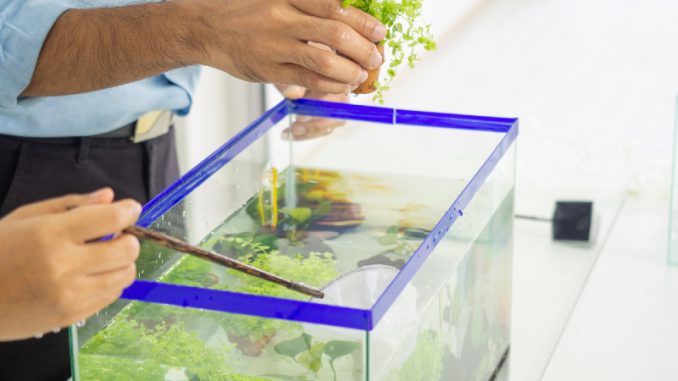
DIY Ideas Can Be Fun!
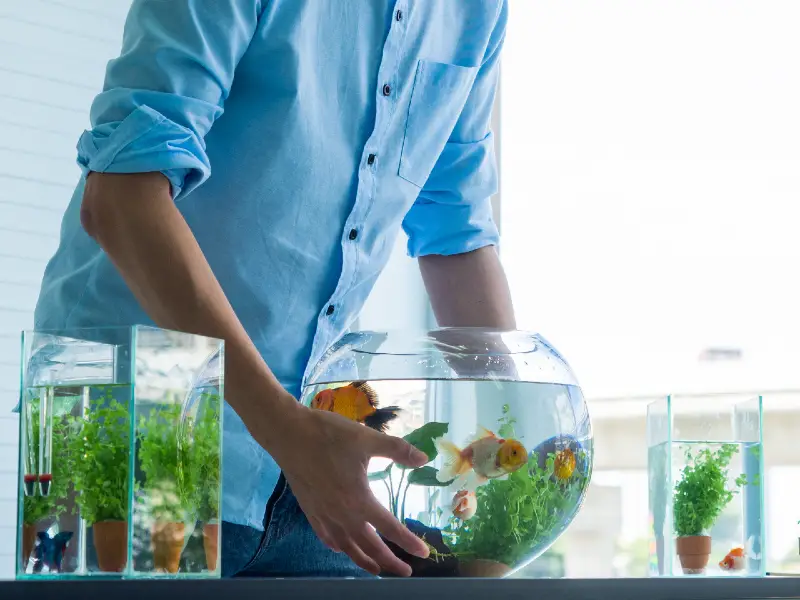
So you want to build a beautiful aquarium, but are on a limited budget. You might have an idea that a small budget limits your options. Think again! There are hundreds of DIY ideas that are either free or very cheap.
Of course, there are many excellent commercial products on the market. If these interest you, by all means, use them. But if your budget is limited, or if you just enjoy the creativity of working on DIY projects, there are many excellent ideas that are affordable and easy to do. Plus, there is something very satisfying when you do it yourself. A DIY project will give you an added pleasure when you see the remarkable world that you create.
Note: DIY doesn’t mean cheaper by default! It’s important to understand that just because you do it yourself. It doesn’t guarantee that it will be cheaper. Some of the most sophisticated DIY projects become very expensive, particularly if the project is very ambitious. Depending on the project, a DIY project can even be more expensive. Generally speaking, for most regular projects, DIY will save you money.
With so many creative ideas out there, you will first have to seriously consider what you want. Think about the kinds of aquariums that interest you. Whether you decide to buy commercial products or you choose the DIY options we will be discussing in this article, you need to decide upon a look and a theme before proceeding. A good start is to ask yourself the following:
- What kind of overall look do I want? Am I looking for something natural or artificial?
- What color palette do I want to use? When considering colors, always remember that they should complement the color of the fish/other) that you intend to house in your habitat.
- Do I want to stick with this theme, or will I want something different in the near future? Don’t invest so much time if you intend to change it shortly. If you are uncertain, start off with something reasonable.
- How much work will be required for my idea and am I willing to invest the time? For some projects, people with limited time may ultimately just go the commercial route. If you have the desire and time, you have more options than someone with a strict schedule. Care should be taken to consider the time that will be required afterward when it comes to attending to the daily needs of your fish/other.
The following are only a few of the many options that you may want to consider. But don’t just rely on these ideas. Instead, use them as creative springboards to think out of the box and come up with variations and new ideas of your own. As always, feel free to share your unique ideas online with others!
1.Unique Aquarium Options
With some creativity, you can show your own imagination even when it comes to your selection for a fish tank or aquarium. Rather than using a standard aquarium, why not consider a large mason jar. Or a large water bottle. Think out of the box! Some people have ever found incredibly clever ways to use old gumball machines as a fish tank, or old TV sets to create fish TV. There are many creative DIY projects that are very ambitious. Most of these will require more time.
2. Rocks, Shells, Sand, Gravel, & Driftwood
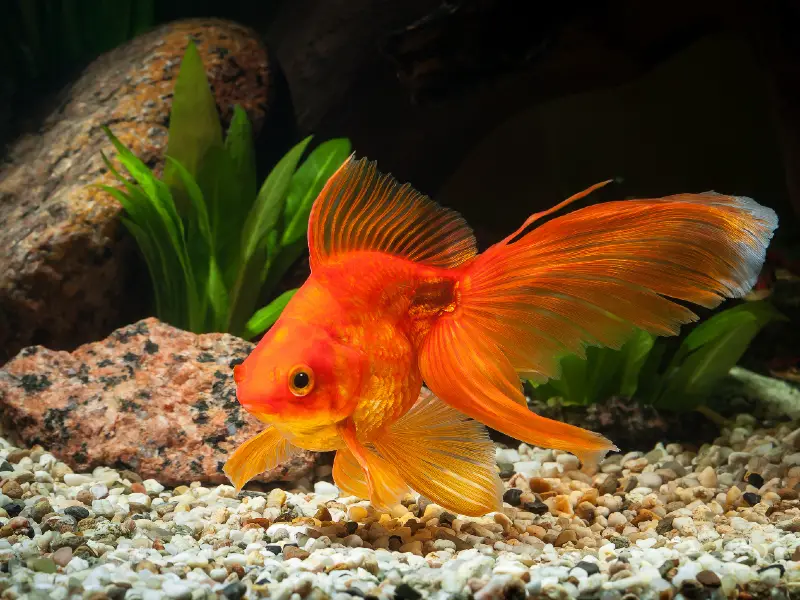
This one is fairly easy. And it can be a fun family activity during any nature jaunt. Look for interesting rocks, gravel, shells, plants, and pieces of driftwood that are easily found in nature. Provided these are clean and suitable for your creatures they can add a perfect touch to your natural themed habitat. Plus they are often freely available in nature. Just remember that only objects that will be safe for your habitat should be placed in the aquarium.
Consider different ways to find fun-looking rocks. It doesn’t have to be in nature. Gardening shops also sell rocks that aren’t that expensive. There are local quarries and rock mines (some for tourists) where you can hunt with your pickaxe for interesting rocks and minerals which can make beautiful additions to any habitat.
Seashells provide another free creative option. Just take a walk at the edge of the shore and you will see hundreds of different shaped, colorful seashells. Remember that seashells are not for freshwater fish!
A piece of driftwood can be a perfect touch for a wooded theme. It has the added benefit of offering a hiding and climbing option for your aquarium’s inhabitants, whether they be fish, crabs, snakes, lizards, or frogs.
Rule: Be aware that you should always make sure that any rock, shell, or driftwood is compatible with the wildlife in your tank or the general ecosystem in your tank. Ask around. Do research online or ask someone knowledgeable at the pet shop if you have any questions.
Some rocks can affect the salinity or pH levels of the water. Even natural wood may have been treated with chemicals and then discarded. This can be a pollutant if it is placed in your habitat without proper sterilization. There are simple options to make sure that these objects are safe to add to your habitat, including sterilization in the sun or under UV light, or even boiling the object in the water.
3. DIY Backdrop
You can make a simple backdrop using any picture, paper, or poster that is attached to the back of the tank, assuming that it is not a spherical-shaped bowl with no back. Be creative. There are many beautiful nature photos around on free stock photo sites which will add incredible realism to your environment.
Be sure that any material you use as a backdrop won’t erode, degrade, or disintegrate in the water. Laminated materials are a good way to prevent this. This is an easy and cheap option to add realism and depth at a minimal cost, without spending a lot of time.
Remember that a backdrop is more than just about aesthetics. Some fish and other animals require a darker environment. Others will need colors that aid in the optimization of temperature. A dark background will often aid in creating a more natural environment. This can directly benefit your fish’s health.
4. Decals/Vinyl Stickers
Consider using decals as an easy option for decorating your aquarium. These can be easily attached to a glass aquarium. Decals are a simple and fun way to add color and character to your aquarium. Whether decals featuring natural images like mountains, rocks, trees, or plants, or decals of your daughter’s favorite Disney character, even using just a few properly placed decals can add a special touch to your habitat.
Vinyl stickers and decals are best used on the exterior of the aquarium. They are unlikely to stick to the insides, particularly if they are submerged underwater. They can be a very creative way to add an added sense of dimension to your environment.
5. Drawing/Painting
You can also draw elaborate designs with permanent markers or sharpies on the aquarium’s glass. Using different colors the entire tank can become your personal tapestry. The only limits are your own imagination.
Additionally, you can also paint the exterior of the tank with a scene of your choice. If you intend to paint the interior of the tank, make sure you only use paints that are safe for your fish. There are specific commercial non-toxic paints on the market that are designed for this purpose.
Do your research and see where you can find these products. Make sure to research properly and be diligent as possible when building your habitat. You always want to make sure that you are only using materials that are safe for your aquarium.
6. Make/Build Your Own Ornaments

Want to add little houses, ships, bridges, and other ornamental structures but don’t have the budget for adding expensive commercial ornaments? You can find certain crafting/modeling materials at the craft/hobby store that can be molded to create your own unique structures. Make sure these are waterproof and non-toxic. Always consider the types of animals in your tank and the kinds of materials that might be dangerous for them.
Consider building structures out of lego or other durable building blocks. If you have children this is a great way to include them in the creation of the aquarium whether or not it is designed for them. Anyone with children knows that they can create the most incredible LEGO structures. This can be a really fun interactive way to add an impressive structure to your tank. Your children will be delighted to see their structure take the center stage in your aquarium.
7. Household Objects
Ordinary garden objects such as flower pots, or household objects like vases, or colorful bottles are clever ways to add realism and creativity. Take a bottle for example. Why not add a message in the bottle for a real ocean theme?
Flowerpots are excellent hiding places for fish or crabs. But you can go beyond bottles and vases. Do you have interesting customized coffee mugs lying around? Think of how you can incorporate them into the setting.
Note: Terra Cotta flower-pots can be good hiding places for crabs when they are in the process of molting their shells. During such molting periods which occur several times during the lifespan of crabs, they will need a quiet place for their body to recuperate. If you are using flower pots make sure there are no sharp shattered pieces that can harm your fish.
8. Hardware Store
Hardware stores offer unlimited ideas. The garden section alone will offer creative options. Consider the use of lawn ornaments and how they might look under the water. Just make sure that whatever you put in the water is safe and won’t pollute the aquarium. Avoid metals that tend to rust and corrode.
PVC pipe is a safe and fun way to add a maze or labyrinth for your fish to swim through, By connecting them together you can create a fun tunnel.
9. Toys: Use your imagination
As will be noted in #5, you can build structures out of legos. Why not add the little lego men and women. Depending on the set, you can have an underwater world populated by LEGO men.
Stretching the idea further, you can also strategically place plastic action to complement your theme. If you have a superhero theme for your little boy, Aquaman or Submariner are great characters to include in your underwater world.
10. Homegrown Plants
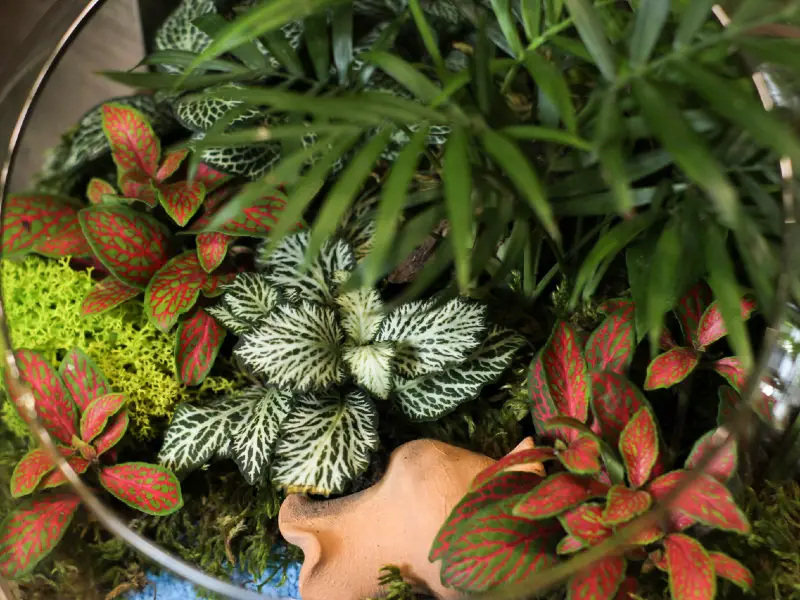
There are certain types of plants that are submersible. The advantage of these plants is they can be grown first and then planted underwater when they reach maturity.
With a little planning, these types of plants can be a creative way to add real vegetation to your habitat. Visit your local nursery to find out more about some of these options if you aren’t knowledgeable about such plants.
11. Train Track
Why not populate the floor of your tank with train tracks? An underwater train station can be a lot of fun, and it can be a fun theme for small boys who love trains. Make sure to stick with plastic tracks and trains, since wooden tracks will likely erode and rot after they have been submerged long enough.
Examples of Harmful Objects: Copper is toxic for many freshwater crabs or tropical fish. So don’t add coins to your treasure chest theme. Even the addition of certain rocks can alter the salinity or PH levels of the tank and ultimately prove hazardous to the tank’s occupants.
If you are uncertain if an object is safe, it is best to quarantine it in a separate body of water and watch what happens over time. If it doesn’t bleed or leak after sufficient time, or disintegrates over time, you can assume it will be safe.
You will also want to consider that very tiny objects may be swallowed by certain fish which can be fatal to them. Finally, be careful to avoid using any objects that can injure your fish, such as ornaments with sharp edges.
Summary
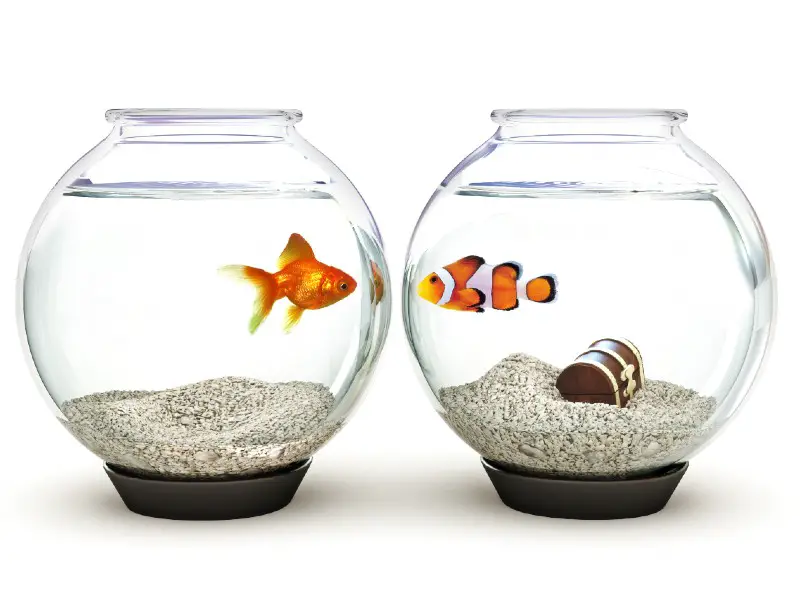
There you have it. A limited budget is really no excuse for you not to build a fun aquarium. We have shown that there are limitless options for creating incredible aquariums with very little money. Some of the most creative and ingenious home aquariums were built on shoestring budgets. There are so many free and cheap DIY ideas all around you.
Education is key whenever embarking on a new hobby. It can be overwhelming at times since there is so much to learn. Do your research. Subscribe to hobbyist journals, and join online forums to learn more about your hobby.
Avoid the temptation to just rush into things. We live in the information age, and everyone has easy access to expert knowledge online. Don’t deny yourself this incredible resource.
The advantages of good research will always pay off:
- You will discover what you really want and have fewer regrets later on. You will have learned the pros and cons of different options and have a better chance of choosing the right theme. Rushing into your new hobby may seem like fun at first. But it will lead to frustration when you realize that you lacked adequate knowledge when you made important decisions.
- Your research will ultimately save you time, money, and disappointment. Rookies are known for jumping in and spending more money without discovering the best options for them.
- Empowering yourself with more knowledge will save you many of the mistakes that can cause beginners a lot of frustration, particularly when it comes to the welfare of their collection. It will give you time to discover important fundamentals about your new hobby and to be able to discern what is reliable information and what is not.
We hope that we have shown you that you don’t need to have a huge budget to create a really cool aquarium. Imagination and creativity are far more important than having an unlimited budget. Be creative!
With the right materials, you can create elaborate habitats including caves, castles, ships, hiding places, and other unique structures which will add depth and realism to your aquarium. With imagination and planning, you really CAN do-it-yourself!
FAQS
Question: What are some things that should definitely NOT be added to an aquarium? I’m confused! I’ve read contradictory information online from different sources.
Answer: Some rules to follow are just common sense. Any ornament that has sharp edges should always be avoided. Objects that have the potential to degrade, bleed, tear or leak will pollute your aquarium and pose a danger to whatever you are housing. Small objects that might look like food are tempting to fish and they should be avoided.
Plastic that can shred or tear has no place in a habitat. This includes plastic bags, but also toys that are poorly constructed. Items containing chemicals can be dangerous as well, either if ingested or in polluting the overall environment. Only use those ceramics that are labeled “dinnerware safe”. Generally speaking, such items are safe for use in your aquarium. If you can eat with it, you can put it in the aquarium. If you are uncertain about an object, don’t use it unless you can verify that it is safe.
It should be noted that there are many aquarium owners who are wary of putting anything in the tank unless it has been purchased from a pet store. From a cynical perspective, one can see how commercial interests could abuse this notion. Yet there are legitimate reasons to be concerned.
There are many things you will have to be careful about. Some people choose to refrain from adding ANY shells, rocks, wood, or plastic objects to their aquarium unless they are commercially tested.
After all, there are certain rocks and shells or types of wood that ARE hazardous to different environments. Seashells don’t belong in any freshwater aquarium. A good rule of thumb is to avoid anything that changes the chemical make-up, quality, or temperature of the water.
This is where your diligent research pays off. Engage in online discussions with other hobbyists and find out the varied perspectives on these issues. Educate yourself and then you will be able to make the right informed decision for yourself.
From a common-sense perspective, never add incompatible animals to the same environment. Don’t add predators if you wish to keep your frog collection. Unless of course they are added as food, such as in the case of mice for snakes, etc.
Question: Do I need to sanitize objects in my tank? Should I use soap?
Answer: A sterile and healthy ecosystem is always essential for a well-maintained habitat. It’s always a good idea to periodically remove objects from your tank and scrub them free of algae. Use a clean toothbrush that is specifically designated for this task. Never use soaps which can be harmful to fish. Never put chlorine in the water. It will kill your fish.
Boiling objects for approximately twenty minutes will usually kill most harmful bacteria. The brush should immediately be boiled in hot water for future use.
Question: Is it safe for me to put my hands in the aquarium?
Answer: If you don’t have to, then you should try not to. If you must, you can put them in, provided that they are clean. Make sure that you wash them thoroughly so that they are free of pollutants, particularly if you intend to submerge them in the aquarium’s water. Of course, if you are keeping piranha as pets, you should probably never put your hands inside the tank.
Question: Are LEGOS really safe? Isn’t it possible that my fish will swallow the small pieces?
Answer: Legos are very strong and are generally considered safe. Provided of course that you only place fully built structures in the aquarium. Don’t just scatter individual lego pieces on your aquarium floor. These can certainly be ingested by a curious fish.

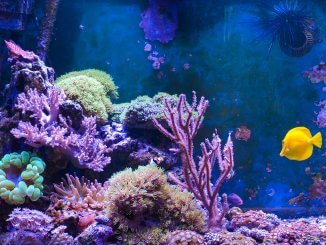
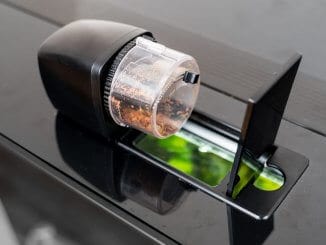
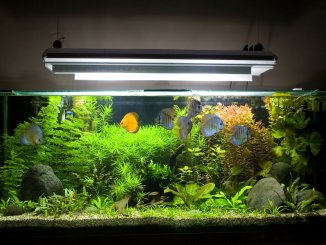
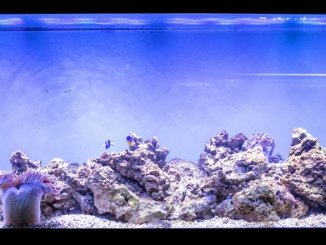
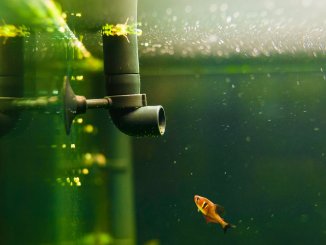
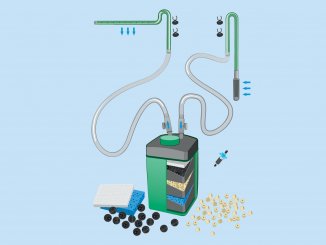
Be the first to comment